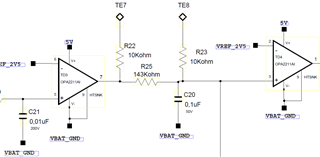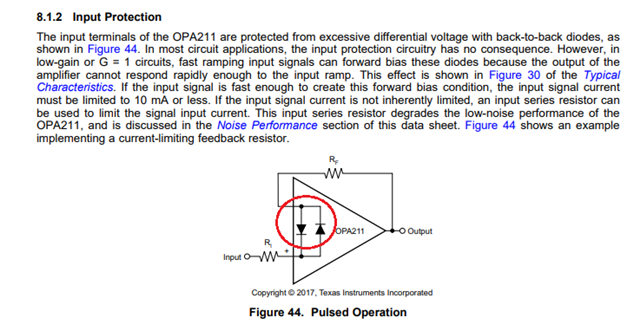Other Parts Discussed in Thread: OPA211, OPA196, OPA197, OPA191, OPA192
For a cascaded comparator application, we use two OPA2211 OP-AMPS as output of one is connected to input of another over a 143kOhm resistor. The partial schematic of the circuit is attached. However, when the primary output is pulled to low, the input of the secondary OP-AMP cannot be zero due to the current sourced by the secondary OP-AMP. the resistor is by-passed over a current measuring multimeter and the sourced current measured to be higher than pin source/sink limits. I cannot find detailed information for this case in the datasheet. Can you provide me with the input structure of the OPA2211 and the mechanism for this current sourcing?



